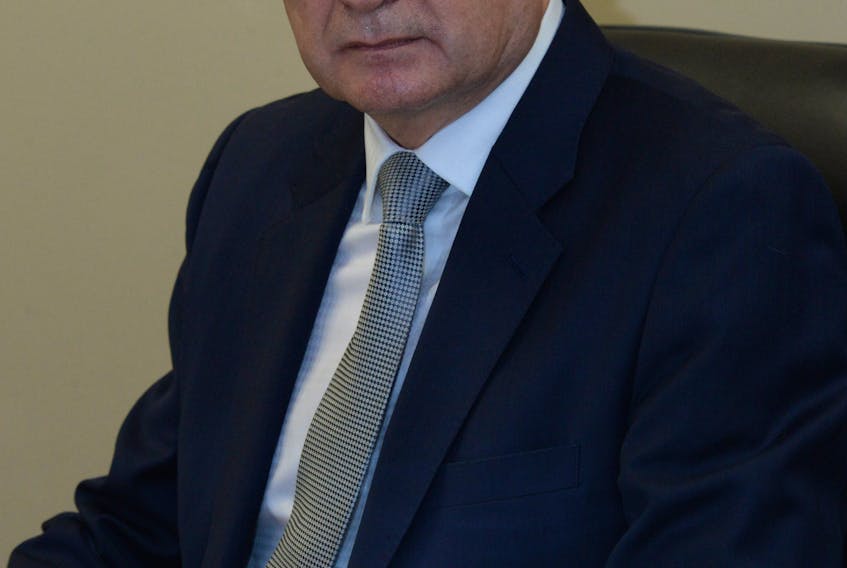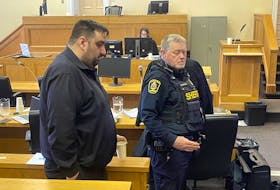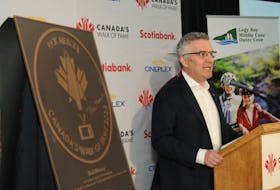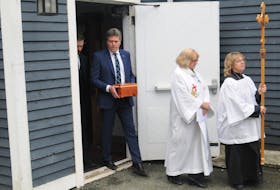ST. JOHN'S, N.L. — Project director Paul Harrington says he personally believed the original estimate for the Muskrat Falls Project was achievable, even if many members of the project management team did not agree.
He continued testimony at the Muskrat Falls Inquiry on Thursday and was asked about the change in project cost, from $6.2-billion at sanction, to $6.5-billion by financial close, running up over time to the $10.1-billion official cost of today (capital cost, reaching $12.7 billion including interest).
On the change to $6.5-billion at financial close in 2013, he couldn’t tell lawyer Peter Ralph how the cost was set at specifically that amount. He was reminded later in the day. It was a number produced by the project team, and one he then specifically put forward to Nalcor’s executive. He testified it was extrapolated from an earlier estimate, with a set percentage tacked on.
The project management team’s internal, best-guess, ‘crystal ball’ estimate around financial close was at $6.8 billion, and auditors have noted the unofficial estimate ran to $7 billion at one point during 2013.
These higher, unofficial estimates were passed up to the Nalcor executive, the same as proposed official estimates, and it was all then left up to president and CEO Ed Martin, and the board.
“I don’t speak to politicians other than the occasional oversight committee meeting,” Harrington said.
He said he believed it was possible the project could have come in on time and on budget, even at the original cost of $6.2 billion.
Testifying Friday morning, he said he believed there was an equal probability of the project coming in on budget as there was of going over budget. “I believed it was achievable,” he testified.
“It had a P50 (probability factor), which is just as much a chance of being achieved as not being achieved.”
Before the end of the day, he was asked about the 50-50 comment. He said a review by Westney Consulting told the team it was really a five-to-10 per cent probability of the project finishing on budget. Both he and the rest of the project team accepted that.
“We were pushing for that target as best we could,” he said.
When inquiry co-counsel Irene Muzychka said there was a “very low probability” of bringing the project in on budget, he agreed.
At one point, Concerned Citizens’ Coalition lawyer Geoff Budden brought Harrington to an email letter sent to Stan Marshall, after Marshall replaced Martin as president and CEO. It was written three years ago now, dated June 6, 2016, and talked about the project management team’s being criticized for decisions they did not make.
It stated, “the direction that was provided to the project team was to set a very aggressive schedule with a first power target that was recognized as being in the P5 to P10 range. The unlikely probability of achieving these cost and schedule targets was well known.”
Budden highlighted: “The unlikely probability of achieving these cost and schedule targets was well known.”
Comparing the testimony — that the project could have come in on budget — to the letter, Harrington said he was offering his personal opinion in one case, while the letter was written on behalf of the whole project management team. He personally believed the cost and schedule was possible, but the same couldn’t be said of the team.
“Many of the people on the team realized that it was a very aggressive schedule and things happened unfortunately that threw us off the schedule,” he said.
The feeling of the team at large were communicated up to Martin, Harrington said, before the project financial agreements were signed.
“I think it was clearly understood by Mr. Martin what he was asking us to try and deliver,” he said.
Martin is scheduled to be called to the stand on June 12.
(NOTE: This is an updated version, to include related comments in response to questions from inquiry counsel on re-direct.)
Twitter: @TeleFitz
RELATED









